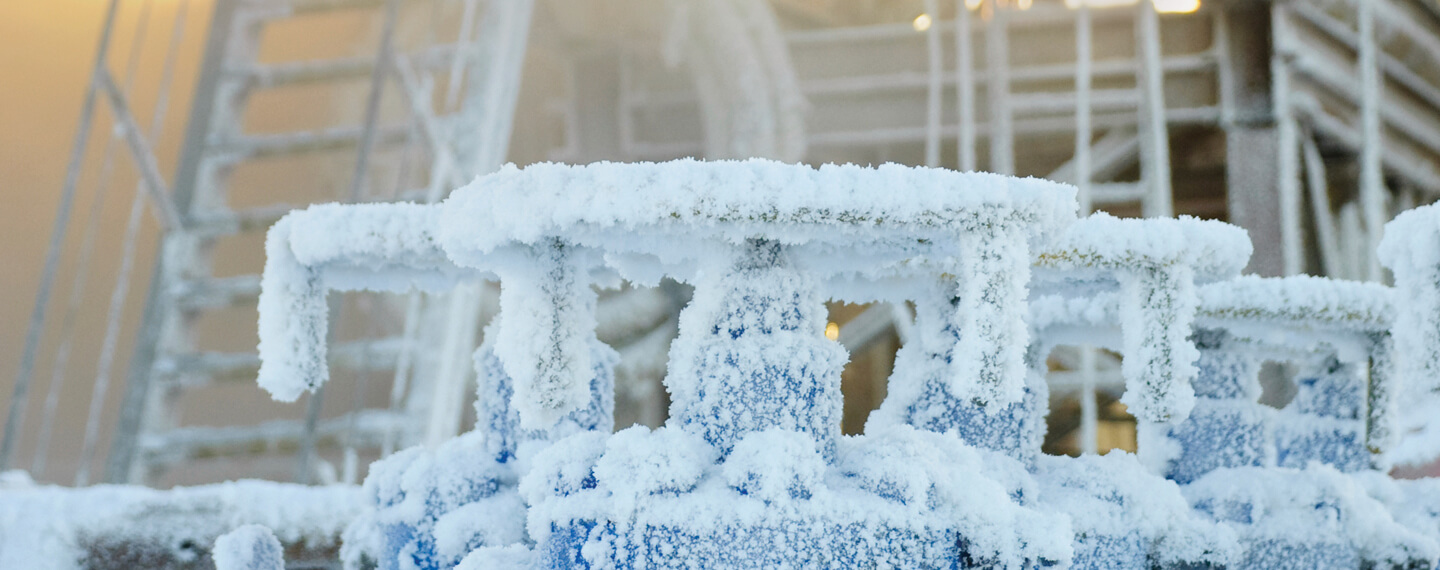There are many factors that can influence the performance of an elastomer at low temperatures. When selecting a material, due consideration should be given to these variables to ensure that not only the elastomer material, but the whole operating environment is considered and that the sealing system is optimised to ensure effective sealing performance.
Some of the relevant factors to consider in low temperature sealing applications include:
- The low temperature capabilities of the material. It’s important to understand the measurement method and the capability of the material against any claims that are made. This can then be compared with the service conditions and checked for suitability.
- The service requirements. If low temperature is due to a ‘blow down’ event, the equipment could be considered to be in ‘survival mode’ and should not be operated until the temperature has recovered above the Tg for the elastomer. Alternatively, for a valve operating in artic conditions, the low temperature would be its standard operating environment, and as a result the seals would be expected to function fully in these conditions.
- Lubrication will help low temperature capability but there is a danger the lubrication will be removed during operation and then the seal low temperature capability would return to its unlubricated value. However, gaseous hydrocarbons may liquefy or solidify on cooling and these liquid hydrocarbon would act as lubricants themselves so maintaining a level of lubrication.
- The media can significantly influence the low temperature performance of a seal. Many liquids will increase in viscosity as they cool and liquids, especially viscous liquids are more easily sealed than gases. Additionally, some media can interact with the elastomer seal to change its low temperature capabilities. For example, hydrocarbons will cause some swell in some elastomers and even small amounts of swelling will plasticise and increase interference with the housing thus improving sealing performance at low temperatures.
- Increasing the levels of squeeze can be used to improve low temperature performance, typically benefiting static seals. This must be off set against the difficulty or damage incurred during assembly, and the potential for issues if the system temperature is also expected to operate at higher temperatures due to thermal expansion.
- Housing geometry and design has also been shown to play a role with surface finish known to affect low temperature sealing.
- Direction of pressure; be that single acting or double acting can influence the performance of the seal. A seal exposed to pressure from only one direction is likely to see less relative movement, and as a result remain able to effect a seal in cold environments, compared to a seal that sees pressure from 2 directions while cooled.
- Pressure applied before or after cooling; can significantly influence the capability of a seal. Testing has indicated that pressure applied before cooling tends to increase the low temperature capability of a seal compared to pressure applied after cooling, where the seal needs to respond to changes in the environment.
Given the number and significance of the variables that can affect low temperature sealing, it is important to understand the capability of any material selected to operate in challenging conditions.
In an effort to provide greater clarity on materials capability James Walker uses a product configured test in order to determine the lowest possible temperature at which each material will effect a seal. We make this assessment using an O-ring in a constrained housing to replicate conditions of designed groove fill, squeeze and surface finish. This allows repeatable testing in real world conditions.
James Walker would be happy to discuss your requirements and work with you to identify an appropriate material for your application.

